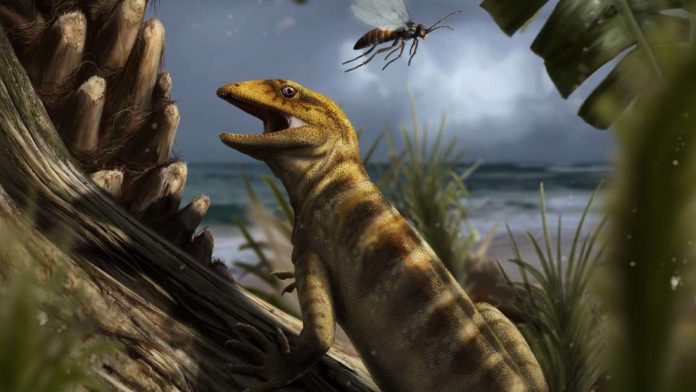240-million-year-old ancient fossil pushes back origin of modern lizards and snakes by 75 million years.
The world’s earliest known lizard knew Earth a lot differently than we do. For starters, the planet had just one continent and dinosaurs were brand new. Even more so, 240 million years ago this “mother of all lizards” (and snakes too, but sadly not dragons) found its home in the unlikeliest of places: the Italian Alps.
First described in 2003, recent scans of Megachirella wachtleri revealed features previously hidden in the fossil. Now, an international team of scientists believe the chameleon-sized reptile is the direct ancestor of 10,000 species alive today belong to a group of lizards and snakes called squamates.
The discovery took the team back in time 75 million years further than they initially thought, and means that lizards inhabited the planet during the Triassic Period. Megachirella (pronounced with an Italian accent) predates fossils previously believed to be the oldest known squamates, which could mean this group split from other ancient reptiles before the mass extinction – which killed up to 95 percent of marine and 75 percent of terrestrial life – and managed to survive it.
Discovered two decades ago in compacted sand and clay layers in northern Italy’s Dolomites mountain range, Megachirella was originally incorrectly classified as a close relative of modern lizards – a theory not all paleontologists bought into.
“When I first saw the fossil I realized it had important features that could link it to the early evolution of lizards,” study co-author Tiago Simoes said in a statement. That’s when he reached out to other scientists who analyzed the fossils, including conducting CT scanning, and a tiny bone in the lower jaw unique to the squamate family. Using data from more than 50 museums in 17 countries, Simoes then conducted a phylogenetic analysis to see how Megachirella compared to other species.
Serving as a “virtual Rosetta Stone,” Megachirella is helping to advance paleontologists’ understanding of how snakes and lizards evolved.
“We currently suffer a crisis in the world of lack of confidence in scientific evidence and facts. Denial of scientific information has been increasing and replaced by alternative facts not backed up by science,” said Simoes. “This study, along with others that try to understand fundamental aspects of evolution… will hopefully draw back people’s curiosity and attention to the natural world and how it has been changing for hundreds of millions of years.”















